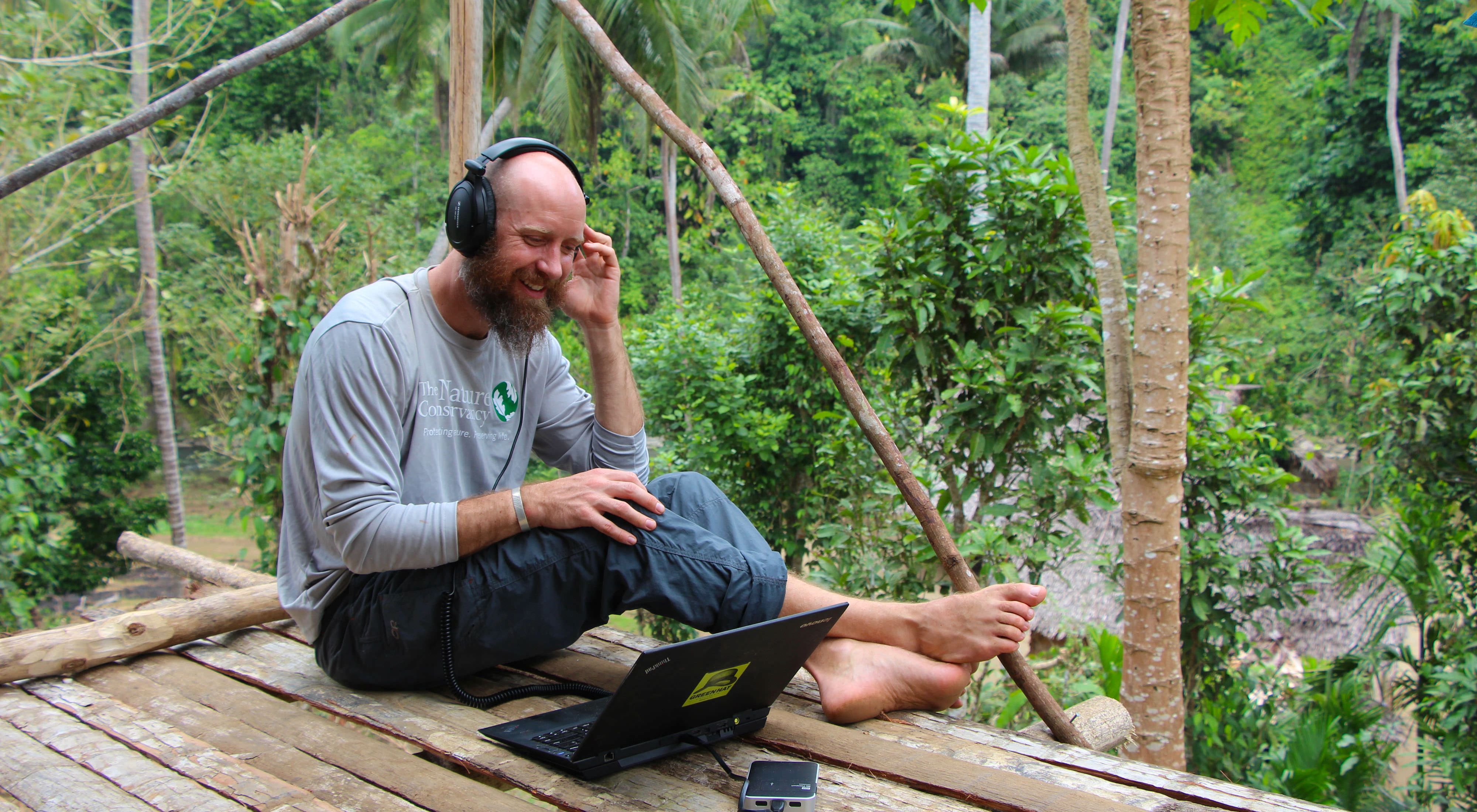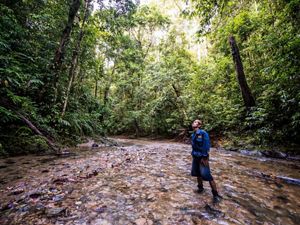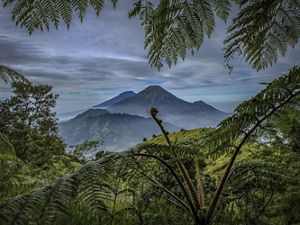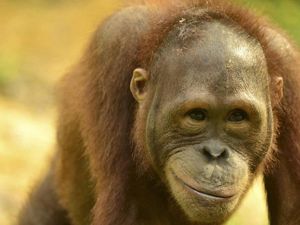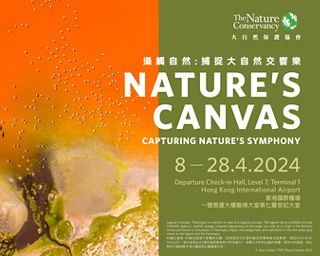Q&A with Eddie Game, TNC Lead Scientist in Asia Pacific
How Acoustics Are Changing Conservation
by Justine E. Hausheer
During his nearly 5-year voyage on the Beagle, Charles Darwin filled a 770-page diary, took 1,750 pages of notes, and collected an incredible 5,436 skins, bones and carcasses from around the globe. Not surprisingly, the methods that scientists use to gather data from the natural world have changed considerably since then, as have the types of information we use as data.
Ecologists and conservationists are discovering how to mine sound data for information about species, ecosystems and how humans impact nature. We sat down with Eddie Game, TNC’s lead scientist in Asia Pacific, to hear his perspectives on how acoustics could revolutionize conservation data collection.
Q: You’ve used acoustics in your conservation work for a few years. How has the field changed in that time?
A: There’s been phenomenal growth in terms of the number of people interested this type of research, as well as its potential applications. People are trying hundreds of different things in all sorts of environments, and there isn’t one set recipe yet.
There has also been a real change in the accessibility and cost of the recording equipment. For conservation organizations, that’s been a really important development, because the questions that we want to ask need to match the scale of our conservation work, which is often larger than the scale of ecological questions tackled using acoustics in the past.
One example is our ability to deploy recorders extensively across logging concessions and conservation areas in Borneo to investigate the impact of different management practices on beta diversity. Not only was it cost-effective to use acoustics to collect hundreds of samples of a larger area, but it actually enabled us to investigate a question that had previously been difficult to get at because of the amount and scale of sampling required.

Q: Why are acoustics such a valuable tool for conservation, aside from scale?
A: All research is valuable, but I work in a space that is about outcomes on the ground. The research we do is in service of this. For me, that’s really what it means to do applied conservation science; it’s science that supports outcomes on the ground. And I think that acoustics are a really nice way to do that for a couple of reasons.
First, you can get really robust and cost-effective data. TNC is not a research organization, we don’t have large amounts of money to spend on data collection, and we’re totally accountable to our donors for every dollar we spend. So the more cost-effective we can be, the more data we can gather. And that’s great because then we know more about the impact of our projects, and we also have more available to spend on taking action.
Second, acoustics can give a lot of researchers with different types of expertise a chance to engage in conservation, perhaps more than they recognize, if they think through their questions and design their studies carefully. In the past, to do ecological surveys you had have to have an intimate knowledge of taxonomy and field methods. Now we have a tool that allows more people to engage in those sorts of questions, which is good for conservation.
Q: Tell me about how and where TNC is using acoustics?
A: Well we’re using acoustics in more places and in more ways than I could succinctly describe.
We have quite a few projects using acoustics to look at presence, and sometimes density, of individual species associated with different conservation or other land-use activities. This includes species such as sandhill cranes and other waterbirds in central California, gibbons in Indonesia, bats in the northern Andes, amongst others.
We also have a number of projects looking at the overall soundscape as an indicator of ecological intactness, to help guide management recommendations and demonstrate impact. This includes work in Papua New Guinea and the forests of Indonesia, and also in marine environments, particularly shellfish and coral reefs.
We are also working on understanding temporal variability in soundscapes and what it means to have a soundscape “baseline” so that we can both provide context for the other work we’re doing and investigate the use of soundscapes for tracking management standards.
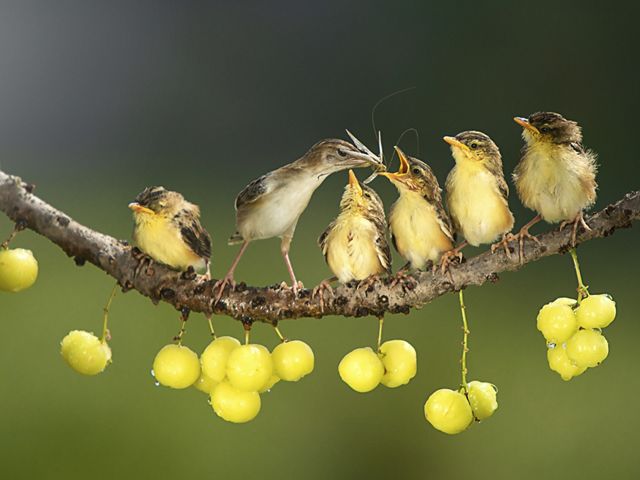
Q: What are some examples of conservation problems that would benefit from applied acoustics research?
A: One thing that I think is interesting is the use of acoustics to look at reporting under certification standards or impact investment projects. In the conservation space, one of the big challenges we have in effectively harnessing impact investment is the difficulty of reporting our impact in a consistent fashion. Acoustics could play a big role in that going forward and potentially generate more resources.
It could also be really helpful in certification and benchmarking, whether it’s for setting standards for certification labels or targets for restoration projects. For example, we could use acoustic benchmarks to track when a restoration project has been successful or to verify that effective conservation measures are in place. Those are things it’s been hard to get robust and independent benchmarks on, particularly ones that are cost-effective for the scale of the projects.
Q: What should scientists using acoustics be thinking about, going forward?
A: As the field keeps growing, I think it’s important for us to think about data availability. It would be great if we could develop a big, open dataset. It will be a shame if we get to a point where we have load and loads of data that could be used for larger questions, but it’s all held behind different restrictions.
This isn’t easy; even the data I’ve collected sometimes has restrictions placed on it based on agreements with companies or communities. But as the discipline emerges, we should aim for as much openness as possible. It would really set us apart.
LEARN MORE
TNC is working to help critically endangered orangutans and their forests survive, in spite of Indonesia’s high deforestation rates.
